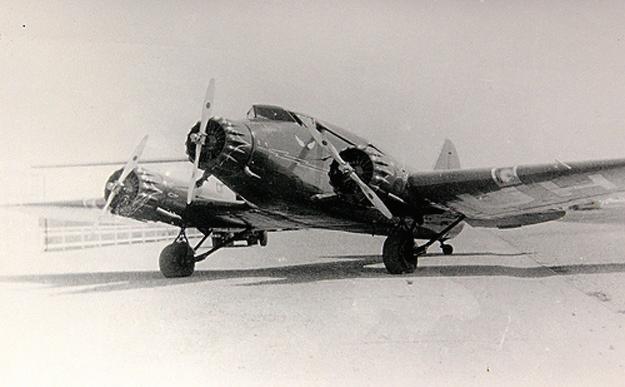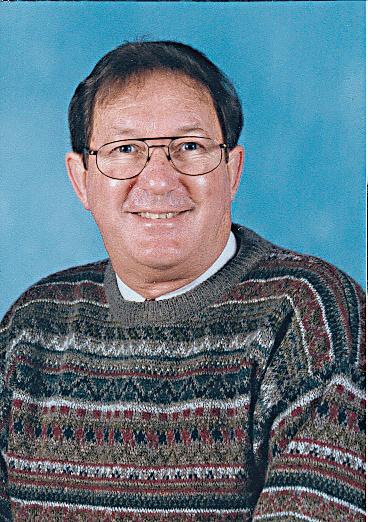
4 minute read
An Amazing Bush
from 2009-10 Sydney (1)
by Indian Link
Indian Link September 2) we read about the crash of a Stinson airliner in the McPherson Ranges, near the NSW Queensland border in February 1937, and of the genius of an outstanding bushman, Bernard O’Reilly, who single-handedly found the wreckage and its two survivors, 600 kilometres north of where a huge search had been made, on the faulty assumption that the plane had crashed near Sydney.)
Typically for an Aussie bushman, the first priority after finding the two survivors, Proud and Binstead, was to boil the billy for a cup of tea.
They told O’Reilly of Captain Boyden’s great skill in trying to angle the stricken plane to land among the trees. It did, in fact, hit the great tree which O’Reilly had used as his guide, 20 metres above the ground, and the wreckage crashed to earth. After escaping from the burning wreck, the three survivors were initially confident that they would be rescued “within 24 hours at the most”.
They knew nothing of the confusion that led to the massive but pointless search being conducted and finally abandoned, 600 kilometres south of where they actually were.
The young Englishman, Jim Westray, must have had some premonition that they would not be found soon. A keen sportsman and outdoorsman, he valiantly set off to find help. Meanwhile, Binstead did his best to bandage and splint Proud’s badly broken leg, and went in search of water. It was to be found some three hundred metres away, down the almost perpendicular mountainside. No longer a young man, Binstead made this hazardous trip many times over the ensuing days. His efforts no doubt kept him and his companion alive. Each journey took up to five hours!
Far below, the two men could see clearings which signalled civilisation, and as the days and nights went by, they began to realise that something must have happened to young Westray. To add to their misery, they frequently saw and heard planes flying overhead, on their Brisbane – Sydney routes. On the Saturday before O’Reilly found them, they saw a small plane circle overhead for some minutes, but without seeing them.
Interestingly, the young pilot, Frank Buchanan, had chartered this plane at his own expense, with the same idea as Bernard O’Reilly himself had had. If the wreckage had been visible from the air, he could well have found it first.
O’Reilly now faced a further dilemma. Having found the two men (there was still no sign of Westray), what would he now do? It would take him at least five days to return to his home and then bring back the medical help which both men needed urgently.
Although O’Reilly knew that there were settlements “as the crow flies”, but getting through the rugged terrain quickly enough would be difficult for him and impossible for Proud and Binstead. Indeed, O’Reilly feared that for the badly injured Proud, with his gangrenous, broken leg, it was already too late.
The accomplished bushman that he was, O’Reilly made a quick, firm decision: he would make a forced march to reach a settlement by the quickest possible route. He gave his woollen jacket to Binstead, took a last glance at his map (an encumbrance, since he knew exactly where he was) and, because it was glossy paper on canvas, gave it to the two men to use as a rain-cover.
He left them with the words: “I’ll bring back a doctor and 100 men!”, and headed days before. Soon he found Westray’s tracks deep in the leaf-mould on the forest floor, and followed them, convinced that the young Englishman had done the correct thing following running water.
O’Reilly soon came to a waterfall, blocked by matted vegetation down a cliffface which Westray had tried to descend. A tangled mess of torn-out bush-lilies told him what had happened. Westray had fallen down the cliff. Eventually, and to his surprise, he saw Westray sitting with his back against a large rock. The English lad would never respond to O’Reilly’s cheery “Hello!” He was quite dead, with a smashed ankle and a bloody face. On the rock beside him lay Proud’s silver cigarette case, and in his wallet was more than enough money to buy comfort and safety in different circumstances.
His heart heavy, O’Reilly focused on his duty to the living. In Green Mountains, he writes “So I ran off and left Jim Westray. Time will never remove that picture of him, sitting with his back to the rock.”
After stumbling and running for what seemed like many miles, O’Reilly found himself on a bush track and suddenly heard the sound of a rifle shot. O’Reilly had encountered a young man called Buchanan out shooting flying-foxes, who was astounded at O’Reilly’s news that he had found two men still alive in the crashed plane.
The quick thinking young Buchanan gathered in his two horses and, by then in darkness, he and O’Reilly headed for the nearest farmhouse, where, were a truck, a telephone, and perhaps most precious of all, the owner John Buchanan, who knew the Lamington Plateau better than any living man.

O’Reilly first telephoned Airlines of Australia, who authorised him to organise the rescue as he saw fit. In five minutes, an action plan was developed and put into action. John Buchanan took every available man up onto an open ridgeline and began cutting a track up the slope towards the wreck, so that the two men could be stretchered out.
O’Reilly himself led another party, including a doctor and several locals, carrying medical supplies and food and water, by the fastest and most direct route to the survivors. With no time to lose, and although himself exhausted, O’Reilly insisted on leaving while it was still dark.









